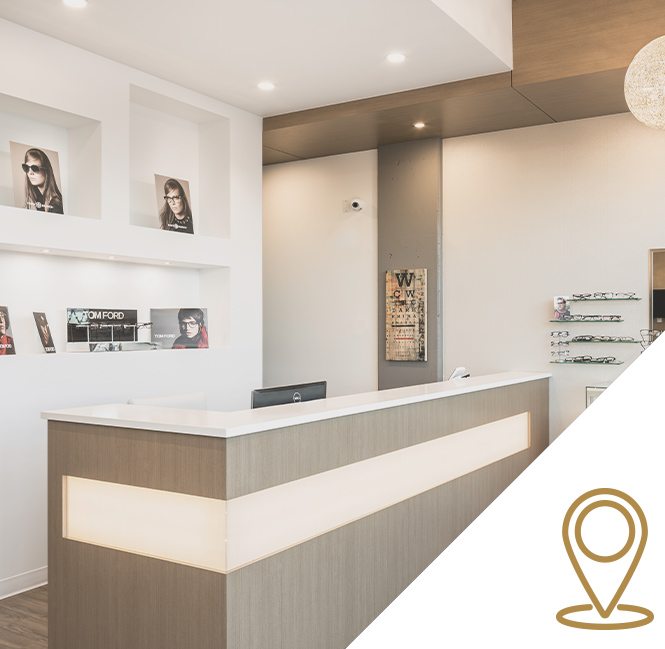Vision changes can be perplexing, particularly as we age. Two common conditions that often cause blurry vision are presbyopia and hyperopia (farsightedness). While they may seem similar, understanding the distinctions between these two can help you manage your eye health better for your next eye exam.
The main differences between these conditions are age of onset, cause, symptoms, and treatments. We’ll break down the differences between presbyopia and hyperopia, their causes, symptoms, and treatment options for these common eye conditions.
What is Presbyopia?
Presbyopia is an age-related condition that typically begins around the age of 40. This condition results from a gradual thickening and loss of flexibility of the natural lens inside your eye. As the lens becomes less flexible, it becomes harder to focus on close objects.
Symptoms of Presbyopia:
- Difficulty reading small print
- Needing to hold reading material at arm’s length
- Eye strain or headaches after reading or doing close work
- Blurred vision at normal reading distance
Causes of Presbyopia:
Presbyopia occurs naturally as part of the aging process. The lens inside the eye becomes less flexible over time, affecting your ability to focus on close objects. It is not a disease but a normal part of aging.
Treatments for Presbyopia:
- Reading glasses: The most common solution for people who do not need glasses for distance vision.
- Bifocal or progressive lenses: These glasses correct both near and far vision.
- Contact lenses: Multifocal contact lenses or monovision correction.
- Surgery: Refractive surgery options like LASIK, CK (Conductive Keratoplasty), or lens implants.

What is Hyperopia?
Hyperopia, also known as farsightedness, is a refractive error where distant objects can be seen more clearly than nearby ones. Unlike presbyopia, hyperopia can occur at any age, including childhood.
Symptoms of Hyperopia:
- Difficulty focusing on close objects
- Eye strain or discomfort when reading or doing close work
- Blurred vision at close range
- Headaches after prolonged close tasks
Causes of Hyperopia:
Hyperopia occurs when the eyeball is too short or the cornea has too little curvature, causing light entering the eye to focus behind the retina instead of directly on it.
Treatments for Hyperopia:
- Eyeglasses: The simplest and safest way to correct hyperopia.
- Contact lenses: Available in various types and materials to fit different needs.
- Refractive surgery: Options like LASIK, PRK (Photorefractive Keratectomy), or LASEK (Laser Epithelial Keratomileusis) can permanently correct hyperopia.
Key Differences Between Presbyopia & Hyperopia
Age of Onset:
- Presbyopia primarily affects adults over the age of 40 due to aging.
- Hyperopia can affect individuals at any age, including children.
Cause:
- Presbyopia is caused by the natural loss of elasticity in the lens of the eye.
- Hyperopia is due to the shape of the eyeball or cornea, causing light to focus improperly in the eye.
Symptoms:
- Both conditions can cause difficulty in focusing on close objects, but presbyopia typically presents as difficulty with small print and reading, while hyperopia can also cause issues with distant vision in severe cases.
Treatment:
- Presbyopia is often managed with reading glasses or multifocal lenses, while hyperopia can be corrected with glasses, contacts, or refractive surgery.
Understanding the Difference
Whether you’re experiencing the effects of presbyopia or hyperopia, understanding the differences and treatment options is crucial for maintaining good eye health. If you notice any changes in your vision, consult with an eye care professional who can provide a comprehensive eye exam and recommend the best course of action tailored to your specific needs.
Remember, regular eye check-ups are essential for catching any vision changes early and ensuring your eyes stay healthy. If you have further questions or need expert advice, contact Willoughby Doctors of Optometry in Langley, BC for an appointment today.











